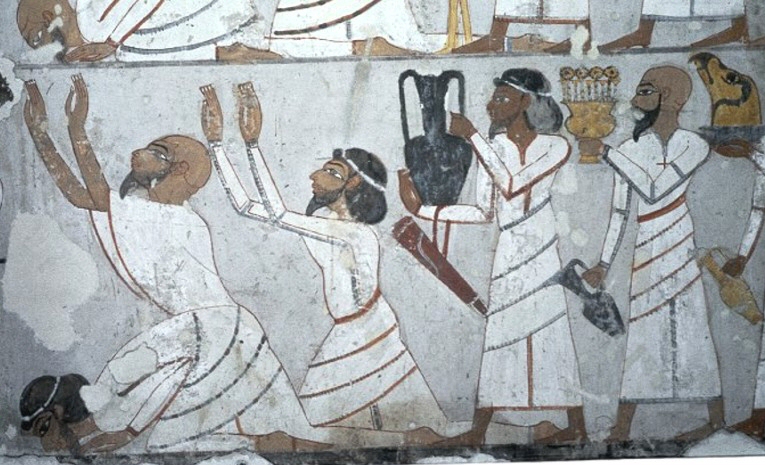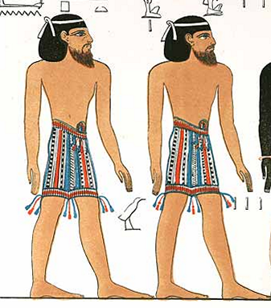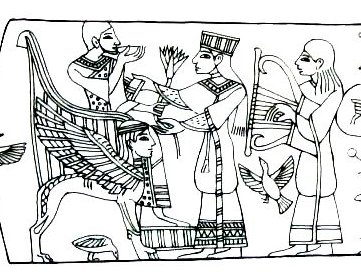- Home Page
- Articles
- The Tribes
- Presentations
- Bonus Material
Ancient History Reconsidered


PLEASE NOTE: These books are offered free of charge. They are not for sale or resale. The only stipulation is that any quotations taken from these articles should give the author due credit and should fully quote the source.
Ancient History ReconsideredIn this main work, the accepted order and structure of the Assyrian and Egyptian chronologies are challenged and reconstructed. This is done by re-examining the archaeological and documented monumental evidence, and in so doing, the integrity of the historical record is restored. Gaps in the archaeological records, known as ‘Dark Ages’, disappear and the large gap, which the grossly over-inflated Assyrian and Egyptian dynasties have created in the Aegean history, is quickly reduced, thereby greatly improving our understanding of the movements of the various peoples in history. Download pdf (File Size 25.6MB) (792 downloads) Alternatively, view online (594 views) Supplementary Works:Legacy of Edom (including a detailed account of the route of the Exodus)File updated 6 May 2024. (Numerous amendments and corrections have been made in this version.) When looking at Edom, everyone seems to make the mistake of looking at that small part of Edom which was located to the south-east of Jerusalem and assume that Edom was a small insignificant group of bedouin tribes. Nothing could be further from the truth. Edom was, from a very early period, a great powerful group of tribes. This work starts by examining the route of the Exodus taken by Israel under the leadership of Moses, identifying the real Mount Seir, and then proceeds to look at the movements of many of the Edomite tribes, examining where many of their descendants are located today. Download pdf (File Size 9.3MB) (838 downloads) Alternatively, view online (634 views) The Forgotten Tribe of Naphtali and the PhoeniciansDue to the over-inflated Egyptian and Assyrian chronologies, the Phoenicians have been classed as Canaanites. They NEVER referred to themselves as Canaanites. This is a common misconception. They merely said that they were from the land of Canaan. In this work we examine who the Phoenicians really were and what connection they had with the tribe of Naphtali. This work is currently the most comprehensive study available on this subject. Download pdf (File Size 11.4MB) (778 downloads) Alternatively, view online (591 views) Ancient Irish History ReconsideredFile updated 24 Aug 2025. (Various amendments and corrections.) The early Irish history is a confused mess of fabricated stories, albeit loosely based on factual evidence. What we shall discover is that the Irish, working from the barest of information, have rationalised their historical accounts to produce a greatly corrupted historical record. Even their genealogical records prior to the 5th Century ce are shown to be contrived. This work demonstrates that the Irish have confused the details of two separate Milesian expeditions, and, in an attempt to make sense of things, have invented a great part of their early history. When we strip away all the false and misleading information, we discover who the early Irish settlers really were. Download pdf (File Size 6.3MB) (774 downloads) Alternatively, view online (601 views) Pride of MoabThe Moabites are as much a threat to Israel today as they ever were. This work looks at where Moab went, where their descendants are today and what impact they are having on the stability of peace in the Middle East. Download pdf (File Size 2.7MB) (753 downloads) Alternatively, view online (645 views) |

All of these files are in pdf format. It is recommended that you download the latest version of Adobe Acrobat Reader as this will allow you to add your own comments and provides a good way of bookmarking your place in the document. 
Israelite men and women in Abishai’s entourage. Note the pointed beards and the fringes on the edges of their garments. The man second on the left on the bottom row is carrrying an eight-stringed lyre, an instrument mentioned numerous times in the Books of Psalms. This is probably one of the instruments invented by King David as recorded in the Bible. 
Israelites bowing down before an Egyptian vizier as depicted in tomb of Sebekhotep (18th Dynasty). Once again, note the pointed beards and fringes on the edges of their garments. 
‘Asiatics’ from the tomb of Seti I. Note the pointed beards and the fringes on the edges of their garments. Note the blue thread which is part of the Biblical instruction. 
Israelite king receiving tribute as depicted in the Megiddo Ivory. |